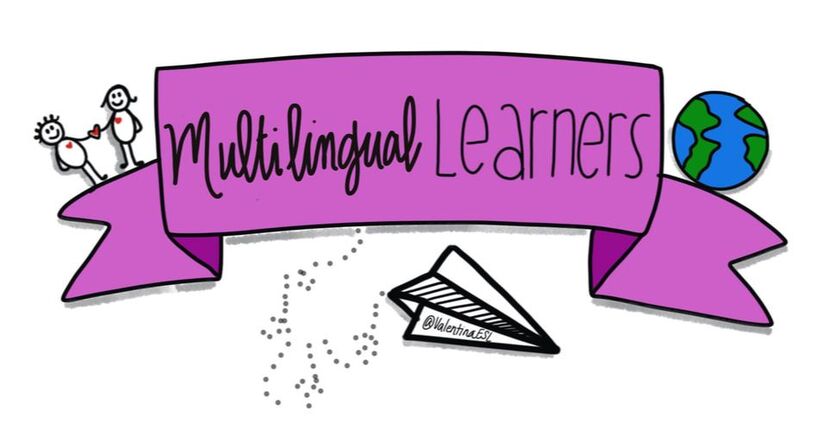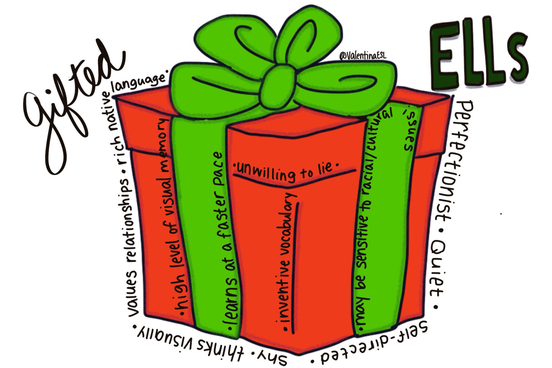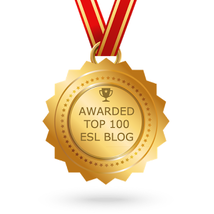|
Honestly, I believe all students are gifted and those who speak more than one language have a unique gift! Right?! Unfortunately, the education system forces us to label students when they meet qualifications in a certain area. Your district probably has set certain criteria for how to designate if a child is “GIFTED”. (If you ask me, they all are…we just may not have found their gift yet.) And every state defines “GIFTED” in its own way. Check here to see your state’s definition of “GIFTED.” Often, we clump the “GIFTED” children in groups and put them in one or two classrooms per grade level. I once heard a teacher in the hallway say, “Why don’t they spread the wealth?” As if “GIFTED” children are the gold and jewels of the school…hmm. I didn’t like that since I’m a firm believer that every child brings gifts to a classroom.
But here we are with districts that require us to test children to find out if they qualify to be called “GIFTED”. Add in a second language and we may have a dilemma…What if a child is not yet speaking English? How do you test to see if they qualify? How do you know if the ELL in your classroom might qualify for the gifted program? The sad fact is that even though ELLs are the fastest grouping population in the United States, they are the lowest represented in gifted programs. Perhaps it’s because districts find it difficult to test a child who may not be proficient in English. But does that make the child less “GIFTED”? Either the child is gifted or not. Knowing English should not be a determining factor. Yet research has found that teachers and parents are less likely to refer ELLs for IQ testing. Would we wait until a child can speak English to identify them for other programs? For example, for special education? Dyslexia? No. So why would we wait for a child to know English before we determine if they qualify for this program? Take Vivian for instance (we are using a pseudo name). She arrived in the US from Mexico as a 4th grade student. In her home country, they did not have a special program for “GIFTED” students. Upon arriving in US schools, Vivian was a non-English speaker but began to quickly acquire the language-much quicker than her like-peers. She basically ate books for dinner eat night. Vivian had a unique, inventive sense of humor and often blended Spanish and English to create new words if she didn’t know a word. If we waited until Vivian became proficient in English before testing her for the gifted program, she could potentially miss years of growth. We have to recognize the signs of ELLs that may qualify for the “GIFTED” program. The signs may look different from the typical “GIFTED” student. Here are a few indicators that might help. ELLs that are gifted might…
This list is not exhaustive. ELLs are diverse and unique and adding on top of that a layer of giftedness makes them even more special. Definitely a WEALTH of knowledge that any classroom could benefit from. What are your experiences with “GIFTED” ELLs? Additional resources: larryferlazzo.edublogs.org/2016/04/17/statistic-of-the-day-gifted-latino-students-overlooked/ https://www.nytimes.com/2016/04/10/upshot/why-talented-black-and-hispanic-students-can-go-undiscovered.html https://www.ewa.org/blog-latino-ed-beat/identifying-gifted-english-language-learners Comments are closed.
|
Categories
All
|


 RSS Feed
RSS Feed
